Triceps Brachii Muscle
The triceps brachii muscle, commonly called the triceps, is a big muscle located on the back of the upper arm. It is responsible for the extension of the elbow joint, straightening the arm, and aiding in movements such as pushing and lifting.
What is the Triceps Muscle?
The triceps brachii is the only muscle that descends the posterior humerus (TB). This fusiform muscle has three heads and functions as a third-class lever at the shoulder since the force is applied between the joint axis and the load.
Since the TB crosses the elbow and uses a third-class lever system there, it is a bi-articular muscle.
It consists of three heads: a long head, a lateral head, and a medial head (tri = three, cep = head). While each tendon has a distinct origin, the three heads come together to produce a single tendon that is distal.
The scapula’s infraglenoid tubercle is the source of the long head, whereas the humerus is the source of the lateral and medial head.
The proximal part of the olecranon process, or the bony prominence of the elbow, which is situated on the upper half of the ulna, is where the single tendon that unites the three heads converges.
Structure of the Triceps Brachii Muscle
The scapula’s infraglenoid tubercle is where the long head originates. It extends behind the teres major and distally ahead of the teres minor.
The dorsal side of the humerus, the medial intermuscular septum, and the lateral intermuscular septum are the sources of the medial head’s proximal emergence in the humerus, which is located just inferior to the radial nerve’s groove.
The lateral and long heads primarily obscure the medial head, which is only discernible distally on the humerus.
The larger tubercle descends to the area of the lateral intermuscular septum, and the lateral head emerges from the dorsal side of the humerus, lateral and proximal to the radial nerve’s groove.
The motor column of the spinal cord has a motor neuron subnucleus unique to each of the three installments. Small type I fibers and motor units make up most of the medial head, huge type IIb fibers and motor units make up the lateral head, and a combination of fiber types and motor units make up the long head. Every fascicle “may be considered an independent muscle with specific functional roles,” according to certain views.”
The olecranon process of the ulna is where the fibers converge to form a single tendon, while some research suggests that there may be more than one tendon. The tendon also inserts into the posterior wall of the elbow joint capsule, which is where bursae, or cushion sacks, are frequently located. Sections of the common tendon extend into the forearm fascia, nearly enclosing the anconeus muscle.
Innervation
The radial nerve is traditionally thought to innervate all three heads of the triceps brachii. More recent research, however, found that the axillary nerve innervated the long head of the triceps brachii in approximately 14% of cases, and the radial and axillary nerves innervated it in 3% of cases.
Variation
The long head and latissimus dorsi tendon often originate from a tendinous arch. Rarely, the shoulder joint capsule and the lateral edge of the scapula may be the source of the long head.
Function of the Triceps Brachii Muscle
The triceps are an antagonist of the brachialis and biceps muscles and an extensor muscle of the elbow joint. Additionally, when the hand and forearm are utilized for delicate movements, like writing, it might fixate the elbow joint.
When prolonged force production is required or when synergistic control of the elbow and shoulder, or both, is required, it has been proposed that the long head fascicle be used.
The medial fascicle permits more accurate, low-energy movements, whereas the lateral head is employed for those that occasionally call for high-intensity force.
To straighten the elbow, the triceps’ primary job is to extend the forearm at the elbow joint. Elbow extension, or straightening, is a daily movement required for reaching, dressing, and pushing off the armrests to get out of a chair.
It aids in extending the arm back behind the body at the shoulder joint because the triceps’ long head crosses the shoulder joint. The radial nerve regulates the contraction of every triceps muscle head.
Moreover, the triceps is one of the few muscles with a clear response. The forearm will reflexively lengthen if the arm is raised to shoulder height with the elbow bent and a forceful blow is delivered to the triceps tendon at the elbow. When this reaction is present, the C7 spinal nerve root is operating normally.
The long head, which originates on the scapula, operates on the shoulder joint and aids in arm retroversion and adduction. It aids in stabilizing the humerus at the apex of the shoulder joint.
Embryology
The third week after gastrulation is when the mesoderm develops. The paraxial mesodermal layer starts to form intosomitomere-containing segments in the third week. These are made up of layers upon layers of mesodermal cells that migrate
from the cranium to the caudal region. They then arrange themselves into somites. About three pairs of somites emerge each day, and by the fifth week, 42 to 44 pairs of somites—four occipital pairs, seven cervical, twelve thoracics, five lumbar, five sacral, and eight to ten coccyx pairs—are visible.
The development of the triceps brachii starts in the fifth week of embryogenesis. The muscle is formed from the paraxial mesodermal leaflet and comes from the dorsal muscle mass of the upper limb bud.
Blood Supply
The deep brachial artery, a branch of the brachial artery supplied by ulnar collateral arteries, provides the vascular supply to the triceps. The brachial vein that runs parallel to the deep brachial artery is the venous drainage.
Lymphatics
Similar to lymph nodes, there are two types of lymphatic vessels: superficial and deep. The cutaneous lymphatic capillaries, particularly those of the hand, are the superficial lymphatic collectors.
These capillaries run proximally in the forearm and divide into three groups: medial, lateral, and anterior collectors. They start in the arm and proceed to the armpit and axilla.
Nerves
The radial nerve (root C6, C7, and C8) supplies the triceps with nerve supply. Nonetheless, the cadaveric investigation revealed that the ulnar nerve may partially innervate the medial head of the triceps brachii.
Further study along those lines indicates that the axillary nerve can also partially innervate the long head of the triceps brachii.
The posterior chord of the brachial plexus in the anterior axilla is where the radial nerve begins. The profunda brachii artery, which gives blood to the posterior arm, is followed by the nerve as it passes through the arm inferolateral. It passes through the radial groove between the medial and lateral heads of the triceps brachii and behind the humerus.
Action
Entire muscle – extension of the forearm
Long head – the arm’s adduction and extension
Muscles
Triceps brachii
Long head
Origin: infra glenoid tubercle of the scapula
Insertion: olecranon of ulna
Action: extension of the forearm
Innervation: radial nerve
Lateral head
Origin: above the radial groove and on the posterior side of the humerus
Insertion: olecranon of ulna
Action: extension of the forearm
Innervation: radial nerve
Medial head
Origin: the humerus’s posterior side, below the radial groove
Insertion: olecranon of ulna
Action: extension of the forearm
Innervation: radial nerve
Anatomical Variantions
There have been a few cadaver investigations where a fourth head was found. This auxiliary muscle may originate from the coracoid processes, humerus, shoulder capsule, or adjacent muscles. These supplementary muscles have the potential to squeeze the radial and ulnar nerves.
Surgeons and physicians should be aware that these variations do occur, even if they are uncommon, to diagnose cases of nerve entrapment and other pathologic causes that might not be explained by any other typical characteristics.
Surgical Considerations
The long head of the triceps brachii may be affected by damage to the axillary nerve (LTB). As a result, individuals who have injuries to their axillary nerves ought to have their LTB function evaluated. A poor prognosis is indicated if they exhibit diminished function, and early repair at three months is advised.
A distal nerve transfer can be used to reinnervate the triceps muscle. The flexor carpi ulnaris fascicle of the ulnar nerve and the posterior branch of the axillary nerve are two often used nerves for reinnervation. It has been demonstrated that the triceps muscle can regain function thanks to both of these neurons.
In addition, different triceps heads can be employed to cover flaps in traumatic injuries. Usually, the lateral and medial heads are taken off as flaps. These treatments are recommended in cases of nerve damage, deformities of the elbow or shoulder, or muscular reanimation.
Clinical Importance
Testing the function of the arm’s nerves is frequently done using the triceps reflex, which is produced by striking the triceps tendon abruptly. The spinal nerves C6 and C7, primarily C7, are tested by this reaction.
The patient’s elbow and shoulder are abducted to a 90-degree angle to assess the reflex. Next, the triceps tendon is tapped near the olecranon using a reflexhammer.
An excess of muscle might result in tendinitis in the triceps. Usually, it shows up as a persistent posterior elbow ache that gets worse when you extend your arm actively. Male throwers in their 30s to 40s are most likely to have the disease. Rest and pain management are the usual approaches to treating this illness.
Triceps muscle ruptures are uncommon and usually only happen to anabolic steroid users. Ruptures of the distal triceps are likewise not very common. The triceps muscle’s anatomical structure is the main cause of its rarity. If a rupture happened, it would happen at the tendon-bone junction as a result of the muscle contracting eccentrically.
The triceps tendon is usually struck directly or as a result of a fall onto an outstretched hand. The patient can’t extend their elbow against resistance and presents with a painful popping sensation, edema, and pain over their posterior elbow.
Surgery is required for a complete rupture but is debatable when it comes to partial ruptures. Remodeling is recommended in addition to surgical treatment if the rupture is chronic.
Other Issues
There are numerous methods for training the triceps brachii. Exercises for it can be done alone or in combination with complex elbow extension exercises. To maintain the arm’s straightness in the face of resistance, it can also be statically constricted.
Cable push-downs, standing triceps “kickbacks,” behind-the-back arm extensions, and lying triceps extensions are a few examples of isolated exercises.
Any pressing activity, including push-ups, bench presses, close grip bench presses, tricep dips, and military presses, is a compound exercise that works the triceps. In these workouts, the triceps will be more isolated by the closer the grip. They work the outside chest more when they grip broader.
Pullovers, pull-downs with a straight arm, and bent-over lateral raises are examples of static contraction exercises that also work the deltoids and latissimus dorsi.
Palpation
Place the patient in a high sitting position, then step behind them to palpate the three heads of the triceps.
Palpate the medial head first by placing your hand over a landmark to feel the muscle. The medial epicondyle of the humerus would be the landmark in this instance. The examiner will position three fingers directly above the medial epicondyle and tell the patient to push downward on the sofa with their elbow, as though they are trying to raise themselves. Lastly, feel the medial head.
Palpation of the long head: The long head of the triceps is located from the posterior axilla to the medial condyle of the humerus. The tester will place three fingers just beneath the axilla posteriorly and tell the patient to extend their elbow by pushing downward. Lastly, feel the triceps’ extended head.
Palpate the lateral head by placing three fingers in the center of the humeral shaft on the postero-lateral side. The patient should then be instructed to extend their elbow.
Anconeus: Tell the patient to extend their elbow and use the lateral condyle of the humerus as a marker when palpating this area.
Exercise of the Triceps Brachii Muscle
Strengthening Exercises
Classic Push-Up
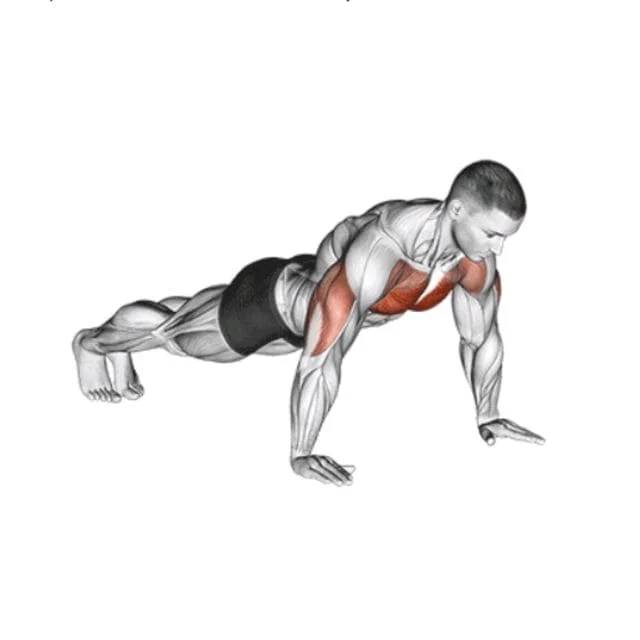
Place your hands under your shoulders and your knees under your hips while you lie on the floor on your hands and knees.
To arrange your body in a single, long line from your head to your feet, lift your knees off the floor and extend your legs behind you.
When your chest is almost touching the floor, slowly bend your elbows at a 45-degree angle and drop yourself as low as you can.
By pushing yourself up, go back to the starting position and repeat.
This can be made easier by facing a wall, placing both hands on it, keeping your body straight, and lowering yourself toward the wall and back.
Alternatively, you can keep your knees on the floor and keep your body in a straight line from your head to your knees.
Put your legs out in front of you and your feet on a bench to increase the difficulty.
Tricep Dips
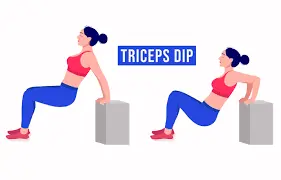
With your feet flat on the ground and your hands on the seat next to you, take a seat on a chair or bench.
When your arms are at a 90-degree angle, drop your body toward the floor after lifting your butt off the chair.
By pushing yourself up, go back to the starting position and repeat.
Try this with your legs straight out in front of you, heels planted on the floor, toes pointed up, and your butt off the ground to make it harder.
Put both feet on another bench for an even greater challenge.
Tricep Press Downs
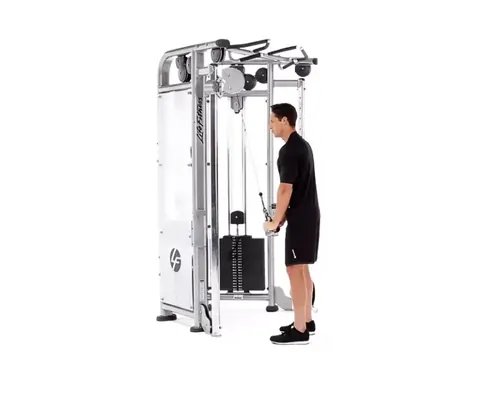
Holding a resistance band in your right hand, position your right arm against your chest and your right hand in front of your left shoulder.
Encircle your left hand with the remaining end of the band.
Maintain tension in the band by starting with your left arm nearly at a 90-degree angle and your left elbow tucked in close to your body.
When your left arm is completely extended, press your left hand toward the floor.
Let go to begin. After performing all the repetitions, switch sides for a single set.
Tricep Extensions
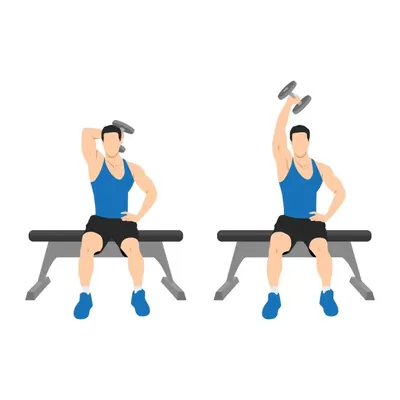
Dumbbells in each hand, either sit or stand.
Bend your elbows and lower the dumbbells behind your head while extending your arms straight overhead.
Hold one weight between both hands if using a weight in each hand is too challenging.
Repeat by extending your arms back straight overhead to the beginning position.
Skull Crusher
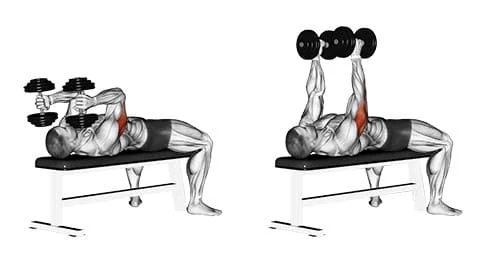
With your knees bent and your feet flat on the ground, lie face up on the floor.
Raise your arms above your chest while holding a dumbbell in each hand.
Your palms should face each other and your wrists should be exactly above your shoulders.
Bend your arms and bring the weights down to the sides of your head without using your elbows.
Return to the beginning point and continue.
Narrow Chest Press
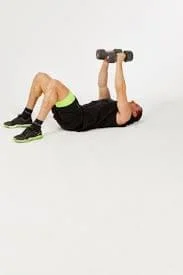
With your knees bent and your feet flat on the ground, lie face up on the floor.
With your wrists exactly above your shoulders and your palms facing each other, raise your arms above your chest while holding a dumbbell in each hand.
Press the weights into contact.
With your elbows curled in at your sides, slowly drop the dumbbells toward your chest.
Repeat after putting your arms back in the starting position.
Stretching Exercises of the Triceps Brachii Muscle
Overhead triceps stretch
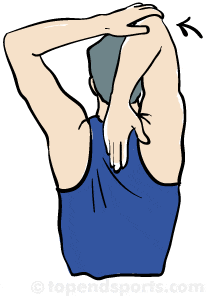
Anyone may perform this stretch when sitting or while standing. It’s an excellent workout to do while seated at a desk.
Reach up for your upper back while bending at the elbow and extending your right arm toward the sky. Try to place your right hand’s middle finger in the middle of your back on your spine.
As you carefully drop your right arm so that your left hand is partly down your back, place it over your right elbow.
Once you have held for about 30 seconds, move to the opposite side. Repeat thrice, if necessary.
Towel stretch
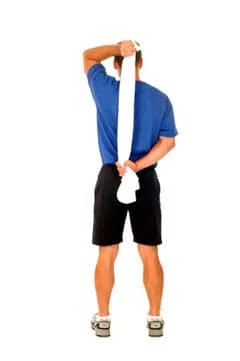
This one offers a deeper stretch than the overhead version, but it does require a prop (a rolled-up towel or something similar).
With your right hand still gripping the end of a rolled towel, extend your right arm upwards. Bend at the elbow and drape the towel over your back.
Grab the other end of the towel with your left hand by reaching back. Make an effort to support your back using the back of your left hand.
Pull the towel down as far as you can without hurting yourself using your left hand.
Change to the opposite side after 20 to 30 seconds of holding.
Cross-body stretch
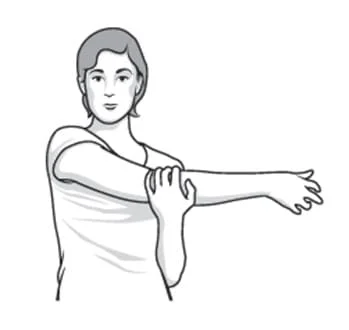
You can perform this simple stretch anyplace, whether you’re seated or standing.
Reach across to your left side of the body after raising your right arm to roughly shoulder height.
To deepen the stretch, bend your left arm at the elbow and gently draw your right arm toward your body with your left arm.
Once you have held for about 30 seconds, move to the opposite side. As necessary, repeat a few times.
Leaning stretch
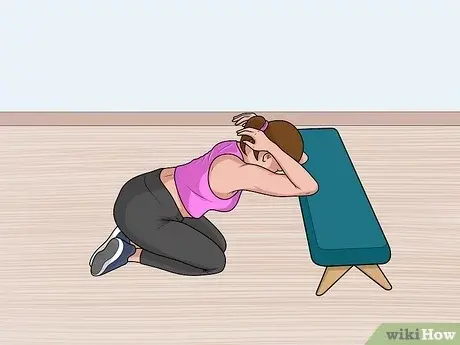
Use a chair, couch, ottoman, bench, or anything else you can lean on to perform this stretch that won’t slide forward.
To avoid bumping your head on a chair, kneel far enough away from it so that you may lean forward and remain parallel to the floor.
To get yourself parallel to the floor, slant forward. Put your elbows over your head on the chair. Make sure not to strain your lower back when bending your elbows to support yourself.
As you align your head with your neck and back, look at the floor.
Make sure the only portion of your body that touches the chair is your elbows.
Put your hands on the back of your neck and bring your forearms closer to your neck.
Breathe out slowly as you press your torso toward the floor.
After 30 seconds of holding, slowly lower your arms and get back to a kneeling position. As necessary, repeat.
Wrist pull
This stretch, which is simple to perform anyplace, will stretch your entire arm even if it isn’t specifically for your triceps.
Take a step forward and extend your right arm. Grasp the right fingers with your left hand and slowly lower your right arm until you feel a stretch.
Once you have held for thirty seconds, move on to the next side.
Summary
The broad muscles that cover most of the upper arm’s back are called the triceps. There are three heads, or muscular segments, in the triceps, and they are all attached to the elbow. These consist of the long, lateral, and medial heads.
All of the triceps’ heads stretch or straighten the elbow as they contract, and the long head helps to extend the arm back behind the body at the shoulder joint.
The most prevalent triceps ailment is triceps tendonitis or inflammation of the triceps tendon. Ice, rest, and physical therapy with strengthening and stretching exercises can be used to treat it.
FAQ
Why is my tricep tight?
One common cause of strained elbows is engaging in activities that strain the triceps tendon. Baseball throwing, hammering, bench pressing, and gymnastics are a few examples. Increased strain may result from these exercises if you quickly boost the intensity or frequency.
Can the triceps cause shoulder pain?
Poor placement of the scapula due to a weak long head of the triceps can cause shoulder pain, reduced throwing velocity, or restricted range of motion. Because of this, the muscles and joints nearby could compensate, leading to systemic issues in the shoulder area.
Do pushups work triceps?
Despite being mistakenly thought of as a chest exercise, it also works the triceps, anterior deltoids, pectoralis major and minor, and core muscles. Push-ups are a great way to strengthen your upper body, lower your risk of cardiac arrest, and improve your body composition
How to improve triceps?
The triceps are worked with exercises including push-ups, bench presses, dips, and shoulder presses. Put another way, the triceps brachii will contract during activities that require pushing with the upper body and extending the elbow. Bodybuilders train certain heads with individual movements to “target” the triceps.
What tricep exercise is most effective?
Diamond push-ups: The best exercise for targeting all three heads of the triceps muscle is this one. Kickbacks: Similar to the diamond push-up, this exercise works all three tricep heads, though not quite as much. Moreover, this activity is simpler, making it potentially more accessible than push-ups.
How fast do triceps recover?
After moderate exercise, the amount of time it takes for your arms to recover, particularly the biceps and triceps, can vary based on your fitness level, the intensity of the workout, and personal preferences. Generally speaking, muscles need 24 to 48 hours to recuperate from a moderate workout.
Where triceps are located?
Large and thick, located on the dorsal aspect of the upper arm, is the triceps brachii muscle. On the back of the arm, it frequently takes the form of a horseshoe. The extension of the elbow joint is the main purpose of the triceps.
What is the origin and insertion of the triceps?
The scapula’s infraglenoid tubercle is the source of the long head. The humerus is the source of the lateral head (superior to the radial groove). The humerus, which is inferior to the radial groove, is the source of the medial head. The heads come together into a single tendon that attaches to the ulna’s olecranon at a distance.
What exercise uses triceps brachii?
The triceps are worked with exercises including push-ups, bench presses, dips, and shoulder presses. Put another way, the triceps brachii will contract during upper-body pressing and elbow extension exercises.
How many muscles are in the triceps?
In many vertebrates, the triceps, also known as the triceps brachii (Latin for “three-headed muscle of the arm”), is a big muscle located on the back of the upper limb. The three sections of it are the long head, lateral head, and medial head. It is the muscle primarily in charge of elbow joint extension, or arm straightening.

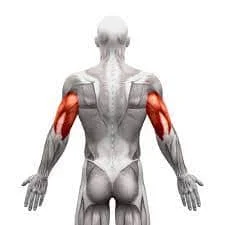
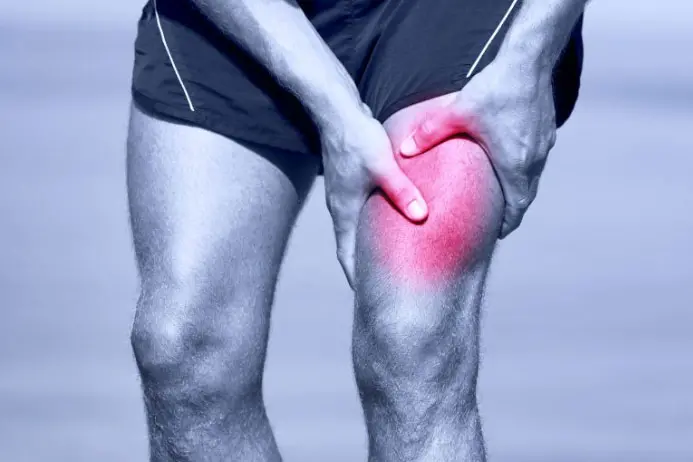
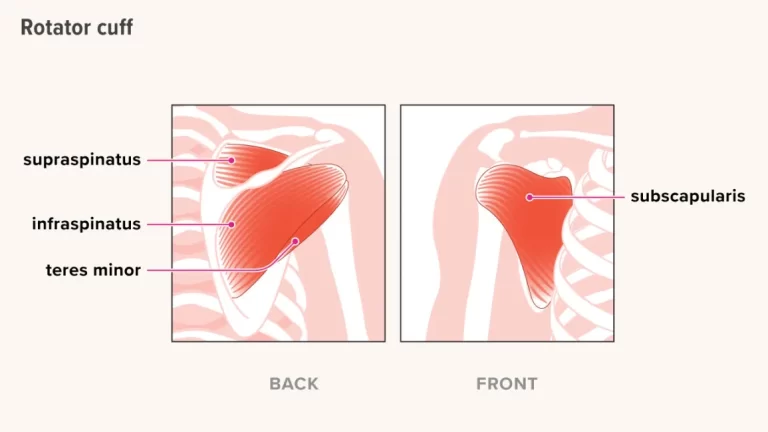
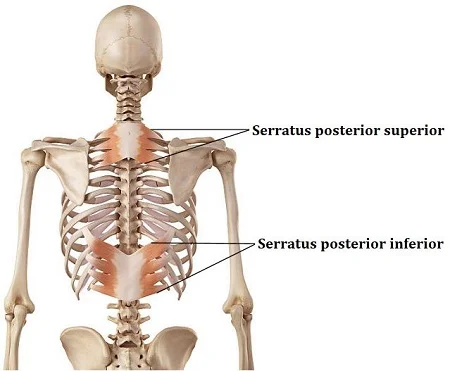
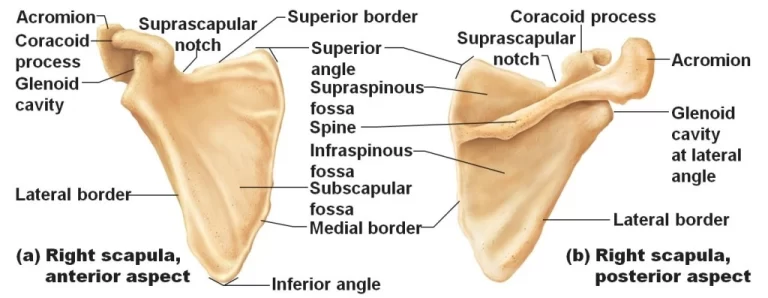
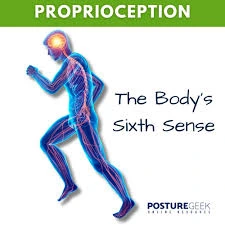
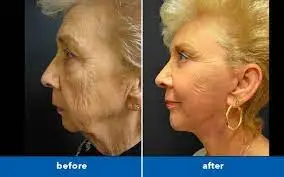
25 Comments